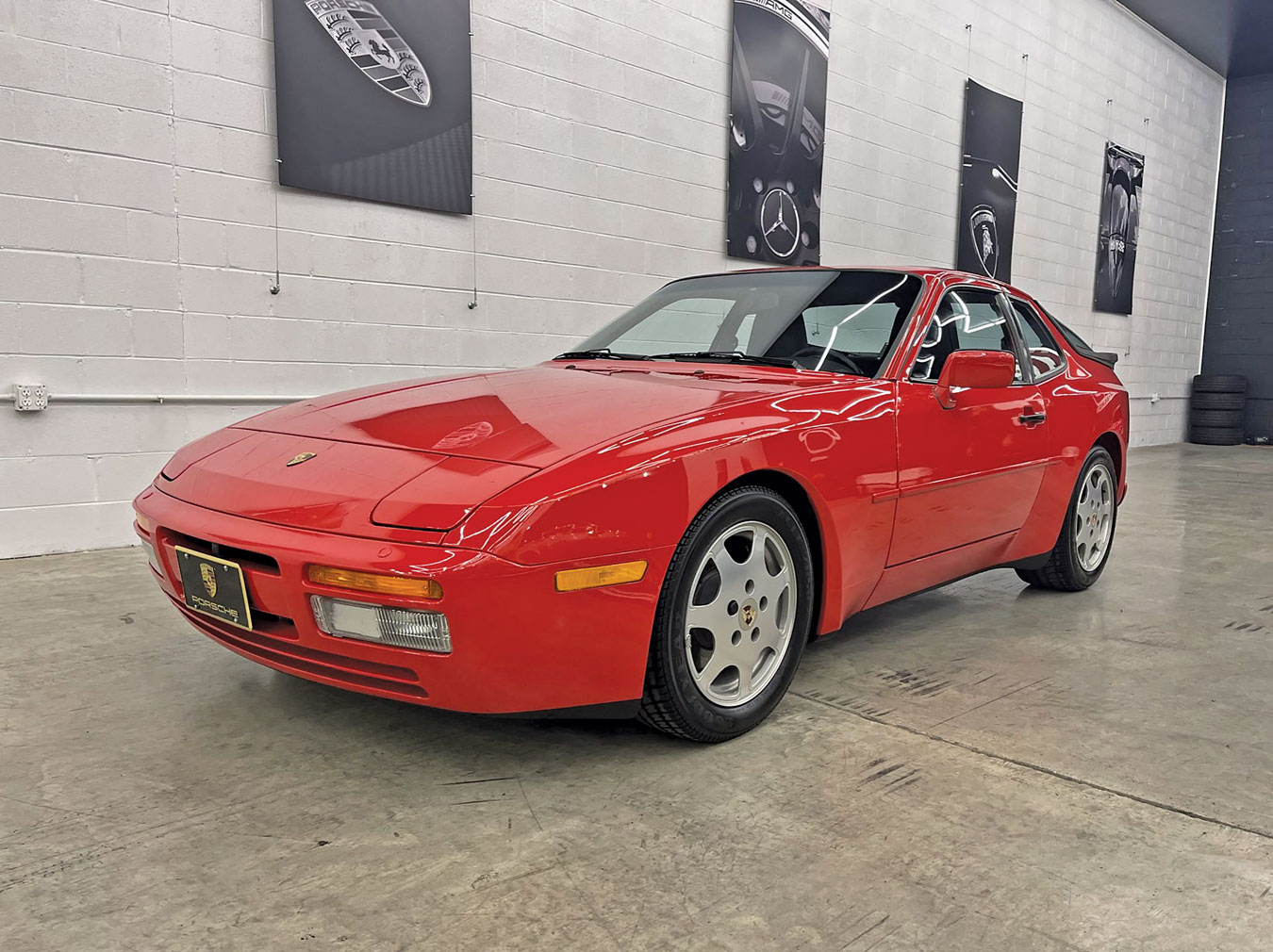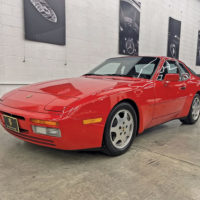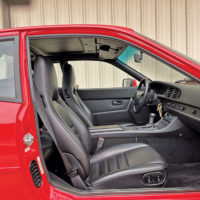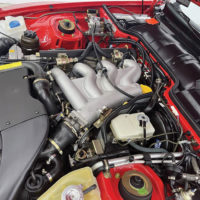SCM Analysis
Detailing
| Vehicle: | 1989 Porsche 944 Turbo |
| Years Produced: | 1988–91 (Turbo S spec) |
| Number Produced: | 7,927 (global M44/52 S-powered cars) |
| SCM Valuation: | $27,000 |
| Tune Up Cost: | $1,500 with fluids, plugs and wires; $2,750 with water pump and belts |
| Chassis Number Location: | Stamping on passenger’s side firewall, label on the B-pillar, tag at base of windshield |
| Engine Number Location: | Rear driver’s side of engine, on bellhousing facing up |
| Club Info: | Porsche Club of America |
| Website: | http://www.pca.org |
| Alternatives: | 1988–91 Chevrolet Corvette Z51, 1989–93 Nissan Skyline GT-R, 1986–89 Porsche 911 |
| Investment Grade: | C |
This car, Lot 63132, sold for $140,944, including buyer’s premium, on Bring a Trailer on January 10, 2022.
The 1986–91 Porsche 944 Turbos are excellent cars, and they have been terrific “budget collectibles” for 20 years. Perhaps that “budget” part just expired.
944s were “real” Porsches
For decades Porsche had image issues with its lower-priced, entry-level cars. Starting with the 914/4 in 1969 and moving through the 1976 924, the “not a real Porsche” stigma was a dark cloud. The 914/4 was built in a Volkswagen plant, and carried a VW engine and a VW serial number. The 924 was built in an Audi plant and was powered by an Audi engine perhaps better suited to a tractor than a sports car, at least until the 924 Turbo began to recruit enthusiasts.
That all changed in 1982 with the 944’s Porsche-designed balance-shaft engine, muscular flared fenders with wider wheels, excellent handling and ample power — although it was still assembled in an Audi plant. The cars sold well. For the 1985½ model, Porsche redesigned the outdated 924 dashboard, added power steering and upgraded the suspension. Then the 1986 Type 951 — aka 944 Turbo — stepped out. Introduced with 217 hp and 243 ft-lb of torque, it was an excellent all-around Porsche, albeit priced not far below a 911.
The ultimate 951, the Turbo S, was introduced in 1988 to be sold beside the regular Turbo. The new M44/52 engine generated 247 hp and 258 ft-lb of torque, while the chassis gained 7 inches and 9-inch-by-16-inch flat-faced Fuchs Club Sport wheels, M030 suspension (Koni shocks and bigger sway bars), plus a limited-slip diff and a gearbox cooler. Porsche also offered a new S-only color, Silver Rose Metallic, with a burgundy interior and throwback plaid cloth seats. For 1989 and up, Porsche dropped the 217-hp Turbo and all 951s were built to S spec, but without the S designation.
The BaT effect
Unless you were helping Renée Brinkerhoff squire her Porsche 356 across Antarctica, you have probably read about numerous sales records being set on Bring a Trailer. This is yet another.
In 2021 (a pandemic year, but also a time when car enthusiasts were both bored and swimming in cash), BaT reported 18,000 cars sold for a total of $828.7m, more than double its $398m take in 2020. That handily beat any traditional auction house. Market watchers were surprised when “mundane” cars continually attracted record high prices, even more so when high-end models sold strong — like a silver 2005 Porsche Carrera GT for $2m and a red one for $1.9m, both in January 2022.
Bring a Trailer launched in 2007 as a blog curating internet car ads, grew into a sales site, and started auctions in 2014. Credit the founders, Randy Nonnenberg and Gentry Underwood, with Howard Swig now a partner, who had the vision to evolve. Oh, and they had the perspicacity to sell to Hearst Communications in 2020.
Changing the game
BaT charges sellers $99 if they submit their own photos and videos or $349 for BaT’s photographers to do the same. This, versus typical 2%–4% seller fees at a big auction house. (BaT also has a premium “white glove” service for particularly expensive cars.) Buyers get a bigger break: a 5% buyer’s premium capped at $5k, compared with 10%–12% at traditional auction houses. On that $2m Carrera GT, BaT’s buyer paid just $5k instead of $200k-plus at the big-name auctions. This is a considerable comptitive advantage.
BaT has more than 700k registered users and 300k registered bidders. Its comments section gives bidders assurances that the car they are following has been (somewhat) vetted. Yes, you do have to speed-read through lots of “Good luck” and “I’d bid if my wife would let me” entries. Still, BaT comments can be helpful regarding originality and history of the model — and sometimes the actual car when prior owners or restorers weigh in.
BaT adds a CARFAX to each post-1981 model-year listing to help determine the number of owners and their locations, as well as verifying mileage using service and registration records. BaT listings struggle a bit on paint quality, originality of body panels and amount of body filler, especially on older cars. When the seller (often hired agents) can provide reassurances on those points, cars sell at higher prices. Thus, sellers often add photos of paint-meter readings from all over the car.
A brand-new car
This 944 Turbo was a single-family car out of Lexington, KY, retained by the deceased buyer’s wife. It showed 3,125 miles and was fully serviced and detailed. The car wore Guards Red paint with black interior and optional leather seats (1989 951s came fully loaded with every available option except leather). It was sold new by Cincinnati’s Northland Porsche-Audi on December 30, 1989, with 301 miles showing.
With an MSRP of $44,900 plus $615 for the leather and $565 destination charge, the car would have been $46,080. However, because sales were lagging badly in 1989, Porsche instituted a $7,000 discount early in the year. Northland Porsche added its own discount, and the final invoice was $37,915.
In the day, that pricing had a lot of us saying, “Yeah, why not?” for a car now substantially less expensive — and slightly faster, ahem — than a 911. The car had its books and tools and paperwork since new. It was a reference-quality, essentially brand-new 1989 951.
Resetting the record
The BaT auction drew a lot of interest. Five bidders went into overtime, adding two minutes after each bid. Over 23 minutes, bids mounted from $98,444 to the winning $135,944 hammer price, before premium.
After the final bid, 109 comments were added; clearly, the peanut gallery was pumped up. The winning bid was $60k above the previous auction record sale of any 944 road car, a 1988 Turbo with 2,400 miles in July 2020 (also sold on BaT).
Was this car worth it? Five bidders above $100,000 say yes. You cannot buck a cash-addled market. If you want to thin your herd, now could be the time. ♦



